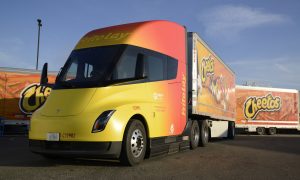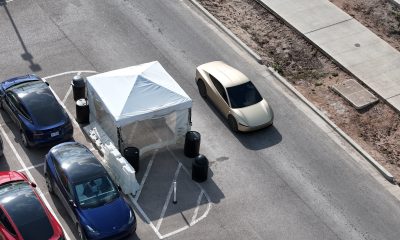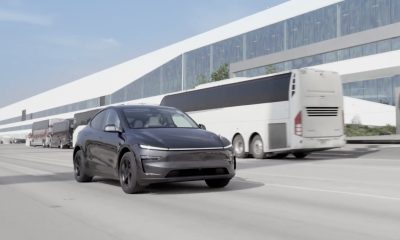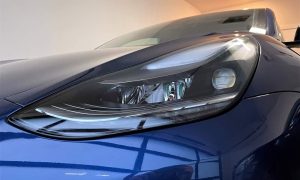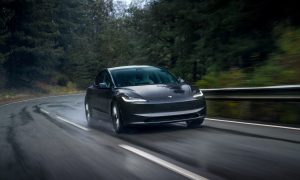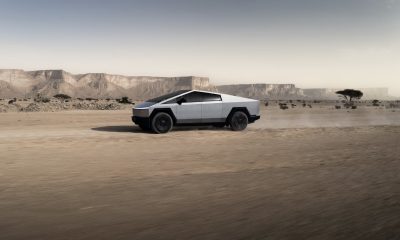News
Full autonomy will arrive sooner than expected, says Tesla CEO
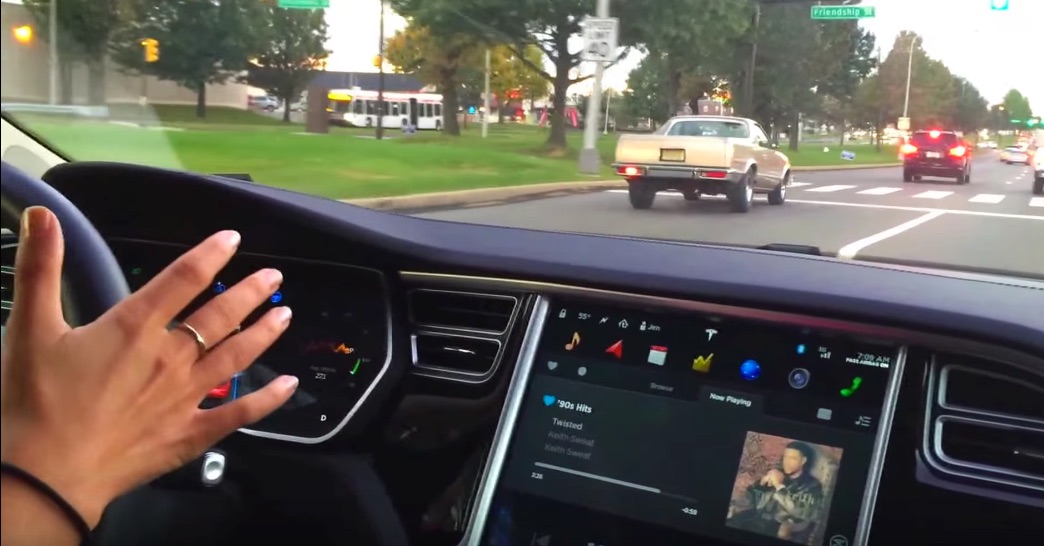
During the Tesla Motors earnings call on Wednesday, Elon Musk told analysts and investors, “Full autonomy is going to come a hell of a lot faster than anyone thinks it will. And I think what we’ve got under development is going to blow people’s minds. Blows my mind.”
Full autonomy will reduce fatalities
He bemoaned the amount of attention being paid to the first fatality while using Autopilot. Even though there are more than 32,000 highway deaths a year in America — a number that has gone up recently as cheap gasoline has led to an increase in the number of miles driven — the media, regulators, and even Congress have been talking non-stop about the death of Joshua Brown on May 7.
“Tesla can’t sneeze without there being a national headline,” Musk said. He promised that work on full autonomous driving would continue with the intention of making it available as soon as possible. It will make the Tesla Minibus possible, an idea that was contained in Musk’s Master Plan Part Deux when it was revealed last month.
Tesla to make own inverter
Even though the Tesla/SolarCity merger is not yet a done deal, Musk is behaving as if it is inevitable. A critical piece of any solar power system is the inverter. It converts the direct current supplied by solar panels into the alternating current used by homes and businesses. It is essential to the Tesla Powerwall residential storage battery system.
“There’s no question Tesla’s going to do an integrated inverter. It’s the logical thing to do,” said Musk during the conference call. “Most people don’t even know what an inverter is.”
Until this point, Tesla has been using inverters supplied by third parties, but Musk has a preference for bringing as many components of his products in-house, where design and supplies can be tightly controlled.
Climbing out of “factory hell”
Musk told analysts on Wednesday that Tesla “just managed to climb out of hell” in June but now the “production line is humming.” The company reported weekly production stood at 2,000 cars by the end of the quarter. Musk expects that number to increase to 2,200 cars a week in Q3 and rise higher still to 2,400 cars a week by the end of the year.
Burned by persistent delays from suppliers for the Model X, he sent a warning to suppliers involved with the production of the Model 3, saying “suppliers who fall short will be cut out of the picture.”
EPS disappoint
Tesla reported a lost of $1.06 per share for Q2, which was considerably more than most analysts expected. The stock was down immediately after the earnings call but quickly rebounded in after hours trading. The stock reaction is “another lesson that Tesla’s stock doesn’t trade over earnings per share,” said analyst Ben Kallo of Robert W. Baird & Co. “Automotive gross margin improved, and the commentary about demand helps with the stock as well.”
As much as Elon dislikes the attention being paid to Tesla because of the death of Joshua Brown, his company gets more press attention than all other car makers combined — a critical part of Tesla’s plan to market its cars without the benefit of traditional advertising.
That flood of news about Tesla, which focuses mostly on the consistently buoyant projections from Musk himself, is what keeps the company’s stock price high. People aren’t buying today’s performance. They are buying the future. If you believe everything Elon Musk is saying, that future looks very bright indeed.
Source: Bloomberg, Photo credit: Electric Jen
Elon Musk
Tesla Semi fleet from Frito-Lay gets more charging at Bakersfield factory
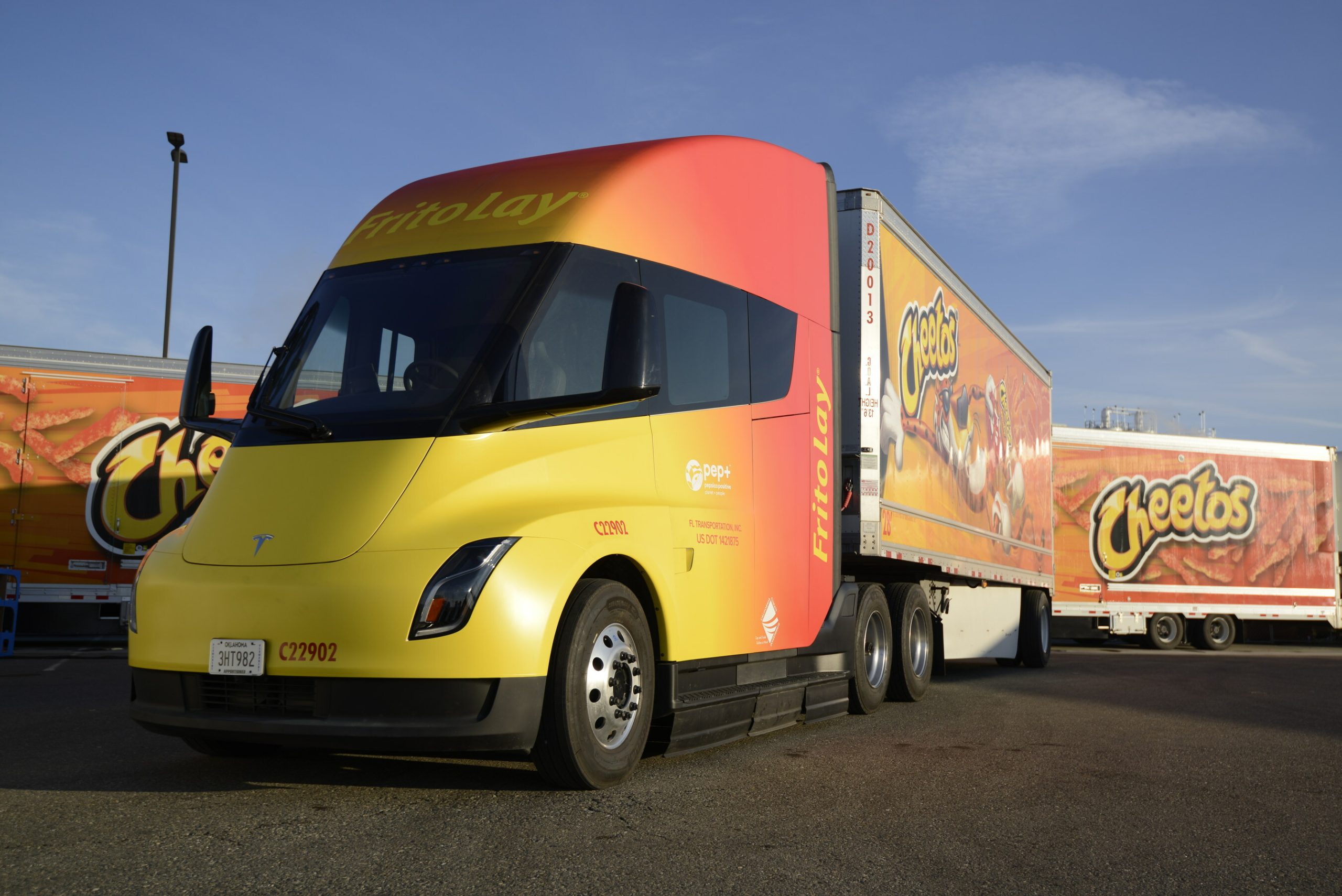
Among the several companies that have had the opportunity to add Tesla Semi all-electric Class 8 trucks to their fleets earlier than others, the most notable is arguably Frito-Lay, which has utilized the vehicle for a couple of years now.
However, as their fleet is making more local runs and there are undoubtedly plans to expand to more Semi units, the company has recognized it needs additional Megachargers to give juice to their trucks.
As a result, Frit-Lay decided to build more chargers at their Bakersfield, California facility, according to new permits filed by Tesla:
🚨 Frito-Lay is building an 8-stall Megacharger array at its factory in Bakersfield, California https://t.co/qARfJjogXF pic.twitter.com/gvorIVxsoc
— TESLARATI (@Teslarati) April 18, 2025
There are already chargers at the company’s Modesto, California, factory, but Bakersfield is roughly three hours south of Modesto.
Interestingly, Tesla is calling the chargers “Semi Chargers” in the filing, potentially hinting that it is no longer referring to them as “Megachargers,” as they have been in the past. This is a relatively minor detail, but it is worth taking note of.
In 2022, Frito-Lay began installing these chargers in preparation for the Semi to become one of the company’s main logistics tools for deliveries in California and surrounding states.
Frito-Lay is not the only company that has chosen to utilize the Tesla Semi for these early “pilot” runs. PepsiCo has also been a company that has used the Semi very publicly over the past two years.
Additionally, the Tesla Semi participated in the Run on Less EV trucking study back in late 2023, where it managed to complete a 1,000-mile run in a single day:
Tesla Semi logs 1,000-mile day in Run on Less EV trucking study
Tesla is planning to ramp production of the Semi late this year. On the Q4 2024 Earnings Call, VP of Vehicle Engineering Lars Moravy said the company would be focusing on the first builds of the Semi’s high-volume design late this year before ramping production in the early portion of 2026:
“We just closed out the Semi factory roof and walls last week in Reno, a schedule which is great with the weather. In Reno, you never know what’s going to happen. But we’re prepping for mechanical installation of all the equipment in the coming months. The first builds of the high-volume Semi design will come late this year in 2025 and begin ramping early in 2026.”
Tesla will build these units at a new Semi production facility located in Reno near its Gigafactory. The company is getting closer to finishing construction, as a drone video from this morning showed the facility is coming along at a good pace:
🚨Tesla Semi factory progress update: pic.twitter.com/dlzIjKwfT3
— TESLARATI (@Teslarati) April 18, 2025
News
Tesla Cybercab no longer using chase vehicles in Giga Texas
Elon Musk expects Tesla to produce about 2 million Cybercab units per year.
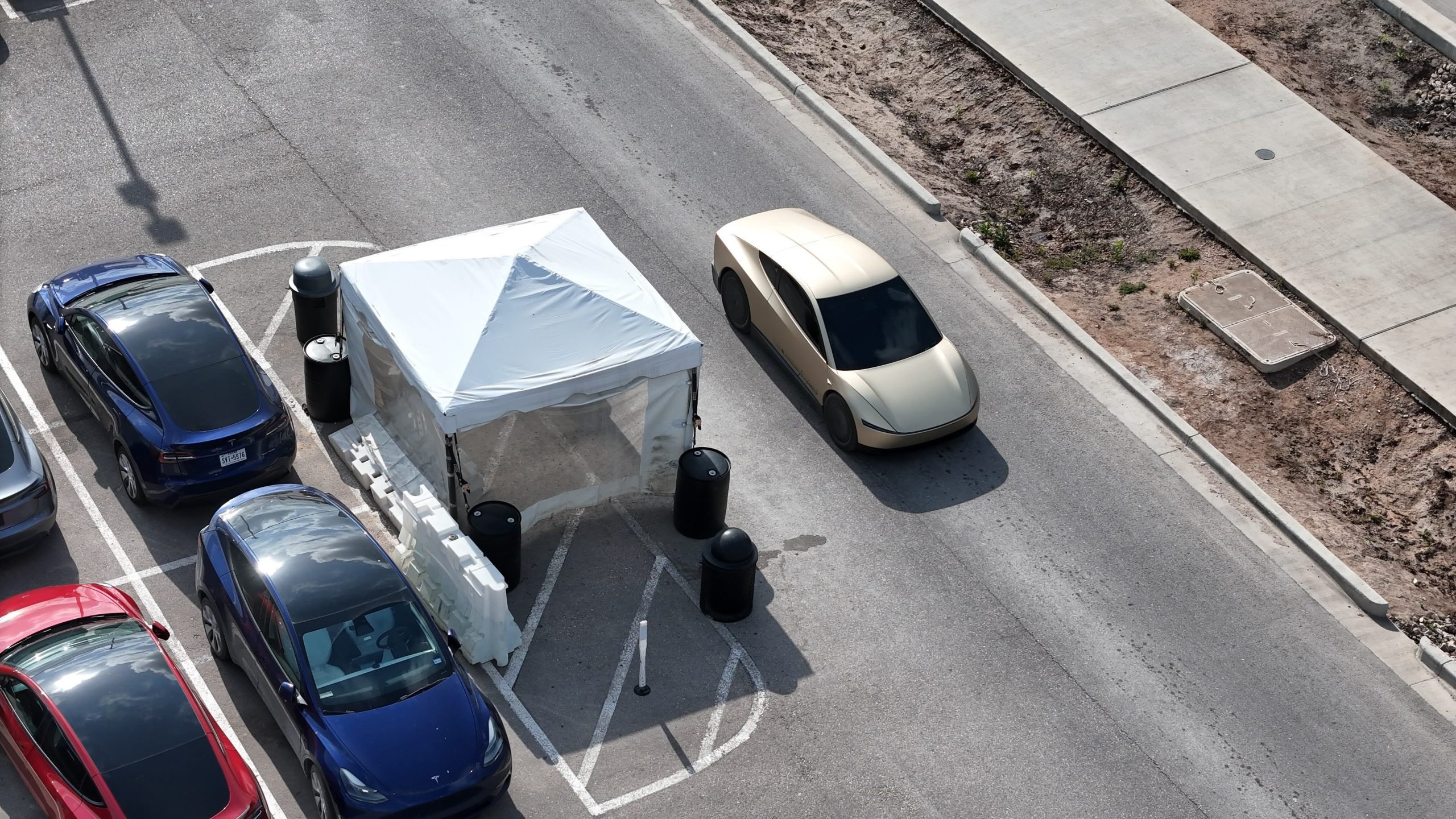
The Tesla Cybercab is the company’s first vehicle that is designed solely for autonomous driving. And while the spacious two-seater is expected to start volume production in 2026, the vehicle’s development seems to be moving at a steady pace.
This was hinted at in recent images taken by a longtime Tesla watcher at the Giga Texas complex.
Tesla Cybercab Production
The Cybercab will likely be Tesla’s highest volume vehicle, with CEO Elon Musk stating during the company’s Q1 2025 All-Hands meeting that the robotaxi’s production line will resemble a high-speed consumer electronics line. Part of this is due to Tesla’s unboxed process, which should make the Cybercab easy to produce.
Elon Musk expects Tesla to produce about 2 million Cybercabs per year. And while the vehicle is expected to see volume production at Giga Texas next year, the CEO noted that the vehicle will be manufactured in more than one facility when it is fully ramped.
No More Chase Cars
While the Cybercab is not yet being produced, Tesla is evidently busy testing the vehicle’s fully autonomous driving system. This could be hinted at by the Cybercabs that have been spotted around the Giga Texas complex over the past months. Following last year’s We, Robot event, drone operators such as longtime Tesla watcher Joe Tegtmeyer have spotted Cybercabs being tested around the Giga Texas complex.
At the time, videos from Giga Texas showed that the driverless Cybercabs were always accompanied by a manually driven Model 3 validation chase car. This was understandable considering that the Giga Texas complex features pedestrians, other cars, and construction areas. As per the drone operator in a recent post on social media platform X, however, Tesla seems to have stopped using chase cars for its Cybercab tests a few weeks ago.
Aggressive Tints
The reasons behind this alleged update are up for speculation, though it would not be surprising if the Cybercab’s autonomous driving system could now safely navigate the Gigafactory Texas complex on its own. Interestingly enough, the Cybercabs that were recently photographed by the drone operator featured very aggressive tint, making it almost impossible to make out the interior of the robotaxi.
This is quite interesting as other Cybercabs that have been spotted around Giga Texas were only equipped with semi-dark tints. One such vehicle that was spotted in February was even speculated to be fitted with an apparent steering wheel.
News
Tesla reiterates FSD’s biggest advantage, even if it’s still Supervised
Even in its current Supervised state, FSD is already pretty life-changing.
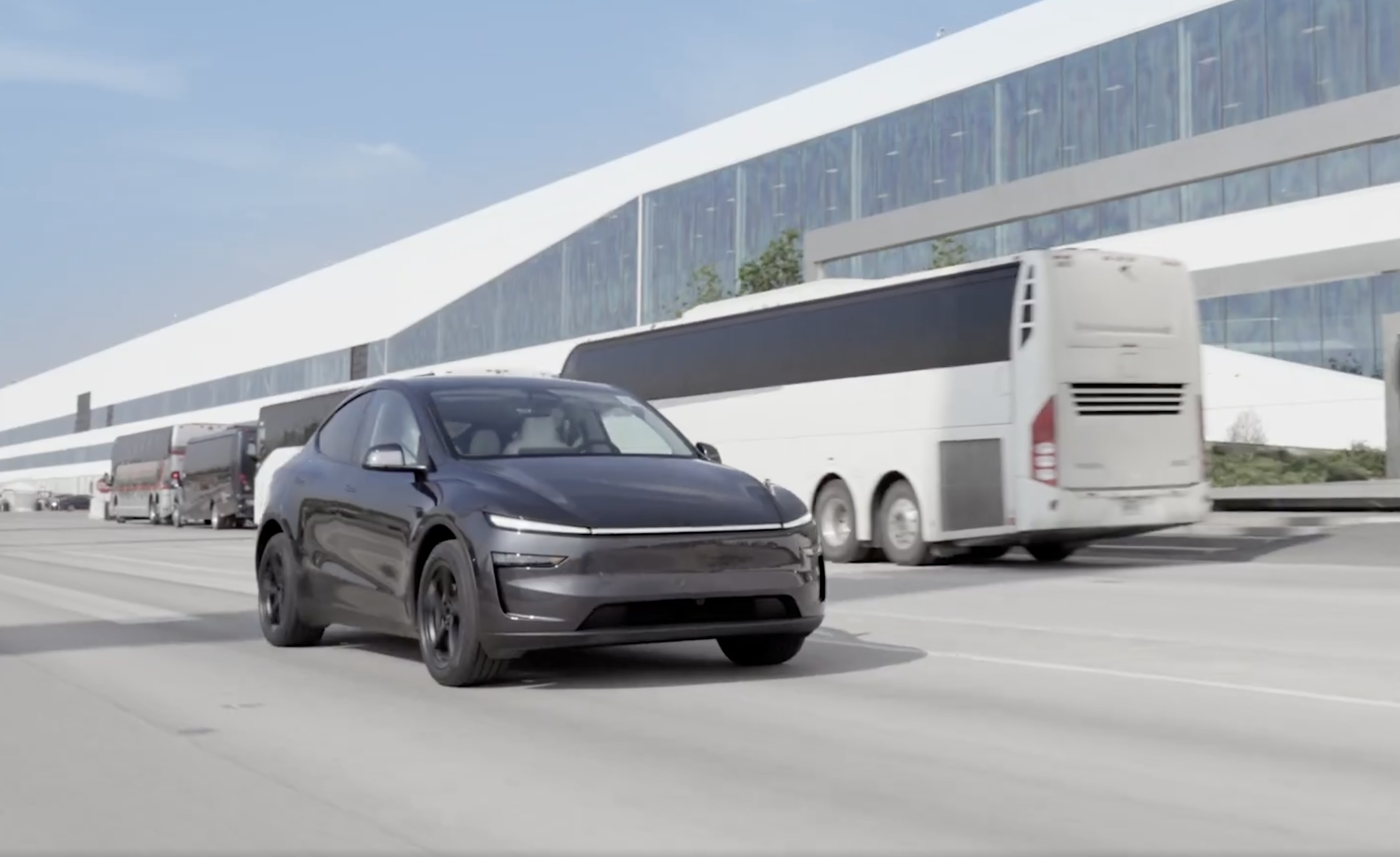
Tesla Full Self Driving (FSD) has a ton of potential. Once it is rolled out as an Unsupervised system, it could change the transportation sector. But even in its current Supervised state, FSD is already pretty life-changing.
This was highlighted recently by the electric vehicle maker through its official Tesla account on social media platform X.
Tesla FSD Unsupervised
Tesla’s self-driving aspirations are expected to come to fruition with the release of FSD Unsupervised, which is currently already being used in the Fremont Factory and Giga Texas. With FSD Unsupervised, Teslas are able to navigate from the end of their production lines to the facilities’ outbound lots without a human driver.
Tesla has previously noted that FSD Unsupervised should see its initial release in Texas and California this year. As noted by Tesla in a post on X, autonomy, when deployed at scale, does not just make cities more livable. It also gives back time to people. This is what makes autonomous driving systems potentially world-changing.
Still Supervised, But Already Useful
FSD today, however, is still Supervised, which means that it still requires constant attention from the driver. This is one of the main points of criticism from Tesla skeptics, as FSD’s current Supervised nature is typically used to argue that it is no better than other adaptive cruise control systems that other carmakers offer. As per Tesla in a follow-up post, however, FSD Supervised already makes life easier.
This is because FSD Supervised works on inner city roads, and while the driver is still observing the car to ensure that it operates well, trips could easily become a lot less tiring. This is especially true for long trips, which could take a toll on the driver if vehicles are driven manually.
“You can get a glimpse of that today: although FSD Supervised currently does require your supervision, you will still notice that your commute or long drives are suddenly so much less taxing. No constant micro-adjustments in rush hour traffic. No frustration. Car does it all for you,” Tesla wrote in its post on X.
-
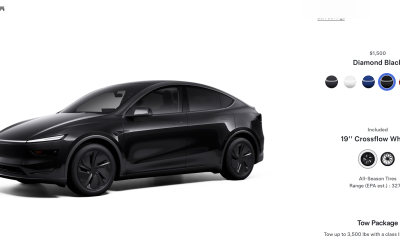
 News2 weeks ago
News2 weeks agoTesla rolls out new, more affordable trim of the Model Y Juniper in U.S.
-
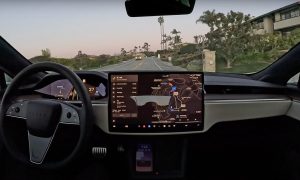
 News2 weeks ago
News2 weeks agoTesla expands Early Access Program (EAP) for early Full Self-Driving testing
-
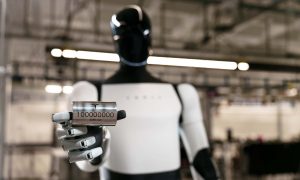
 News2 weeks ago
News2 weeks agoTesla celebrates key milestone for 4680 battery cell production cost
-
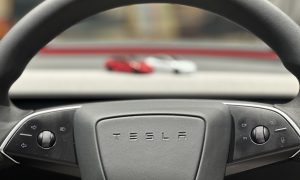
 Investor's Corner2 weeks ago
Investor's Corner2 weeks ago“Nothing Magnificent about Tesla (TSLA),” claims Jim Cramer
-

 News1 week ago
News1 week agoI took a Tesla new Model Y Demo Drive – Here’s what I learned
-
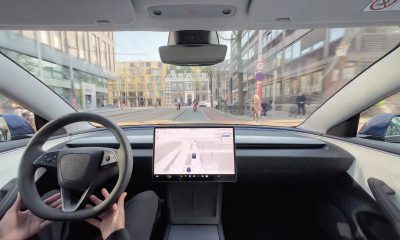
 News2 weeks ago
News2 weeks agoTesla Europe shares FSD test video weeks ahead of launch target
-
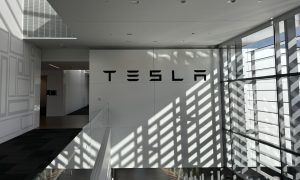
 News2 weeks ago
News2 weeks agoThis Tesla executive is leaving the company after over 12 years
-
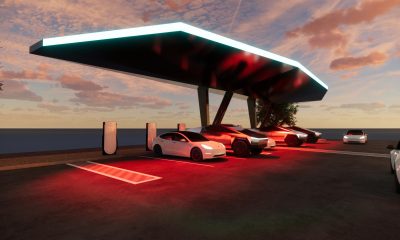
 Elon Musk2 weeks ago
Elon Musk2 weeks agoTesla is building a new UFO-inspired Supercharger in the heart of Alien country

